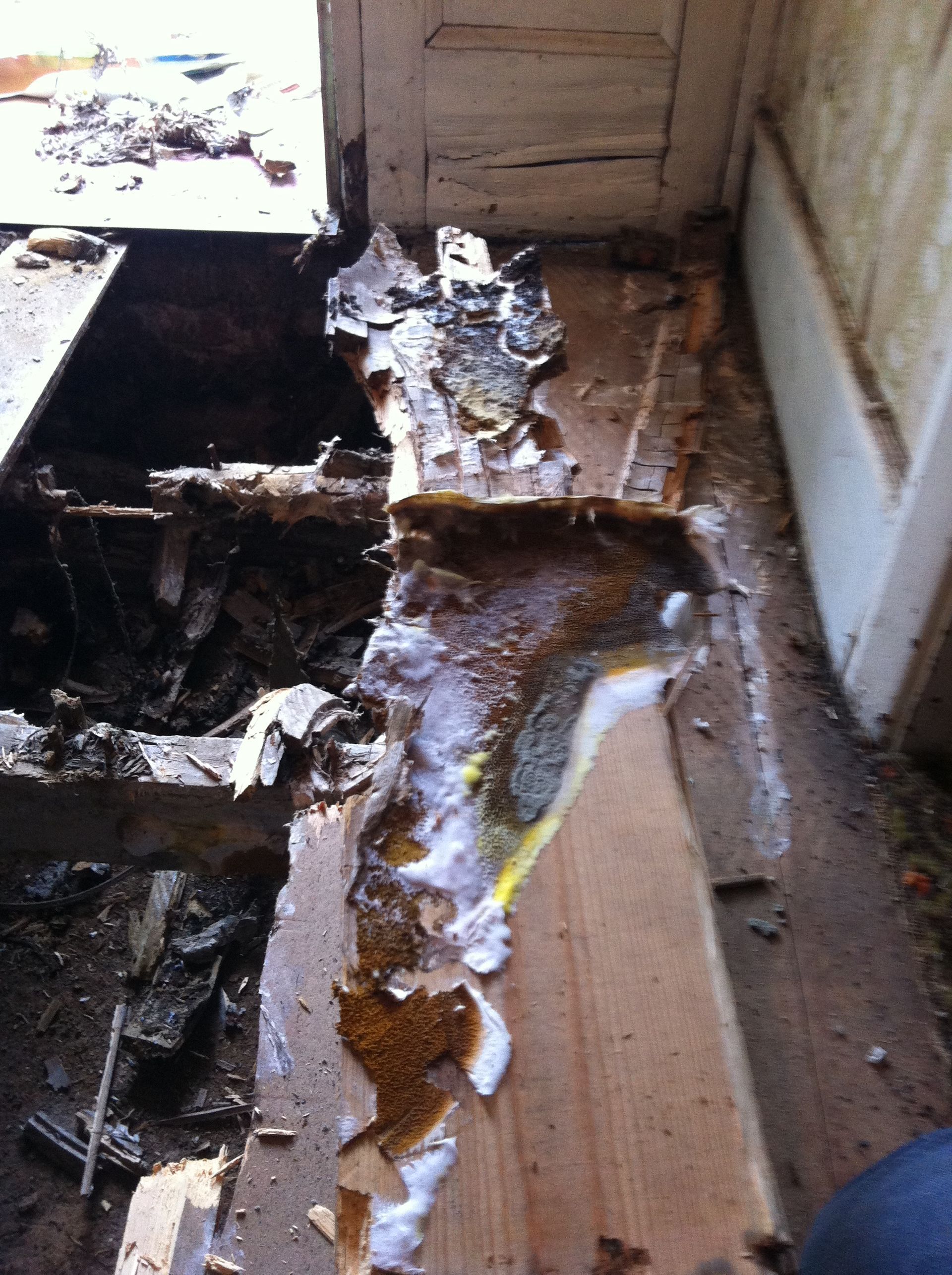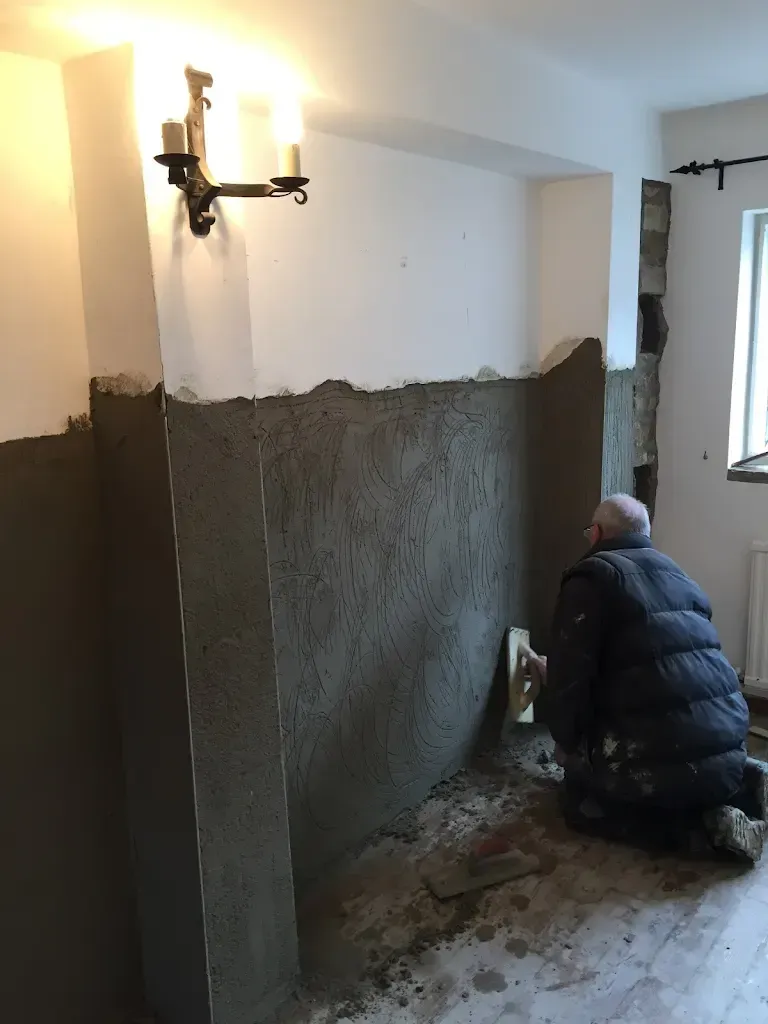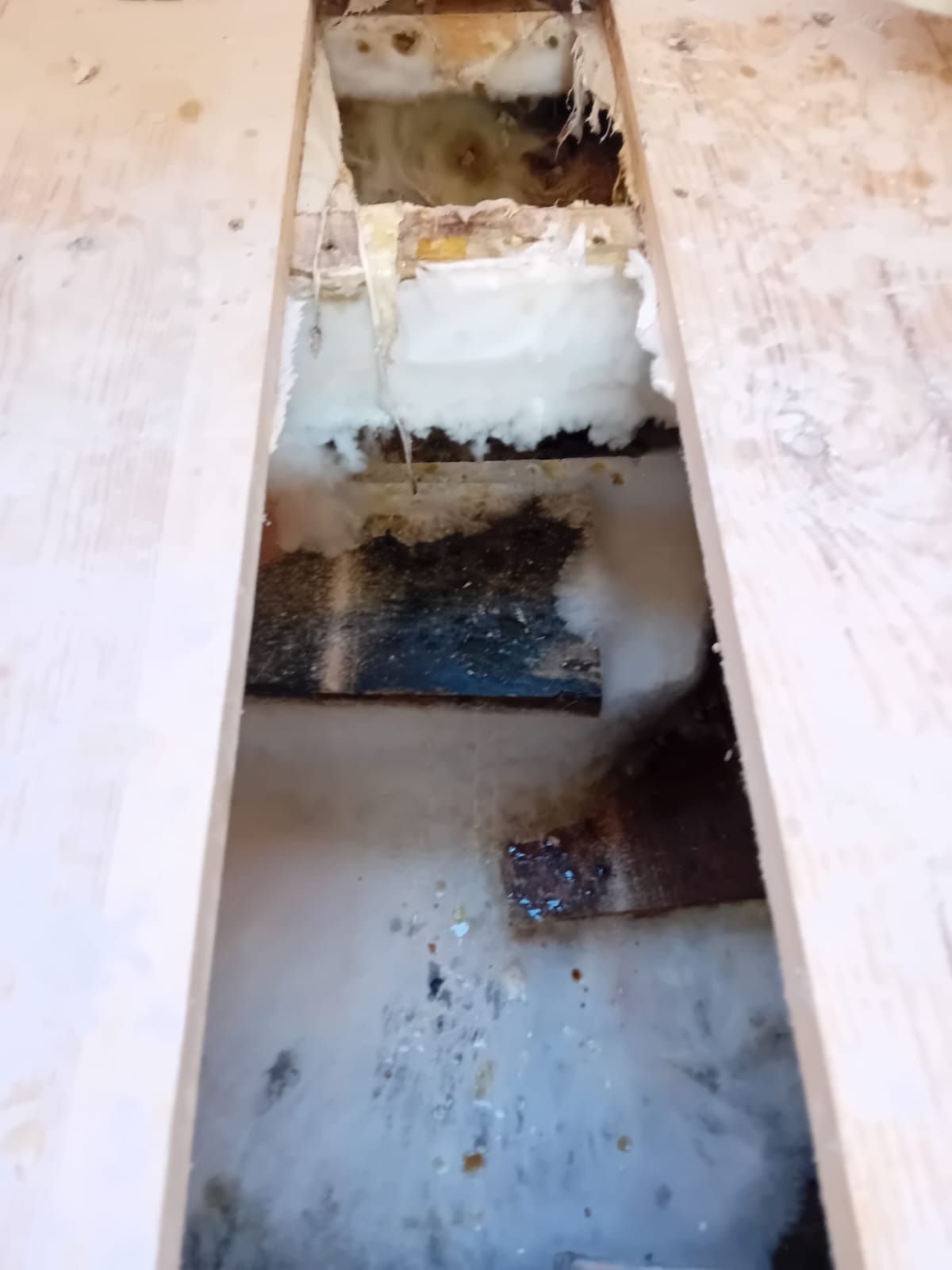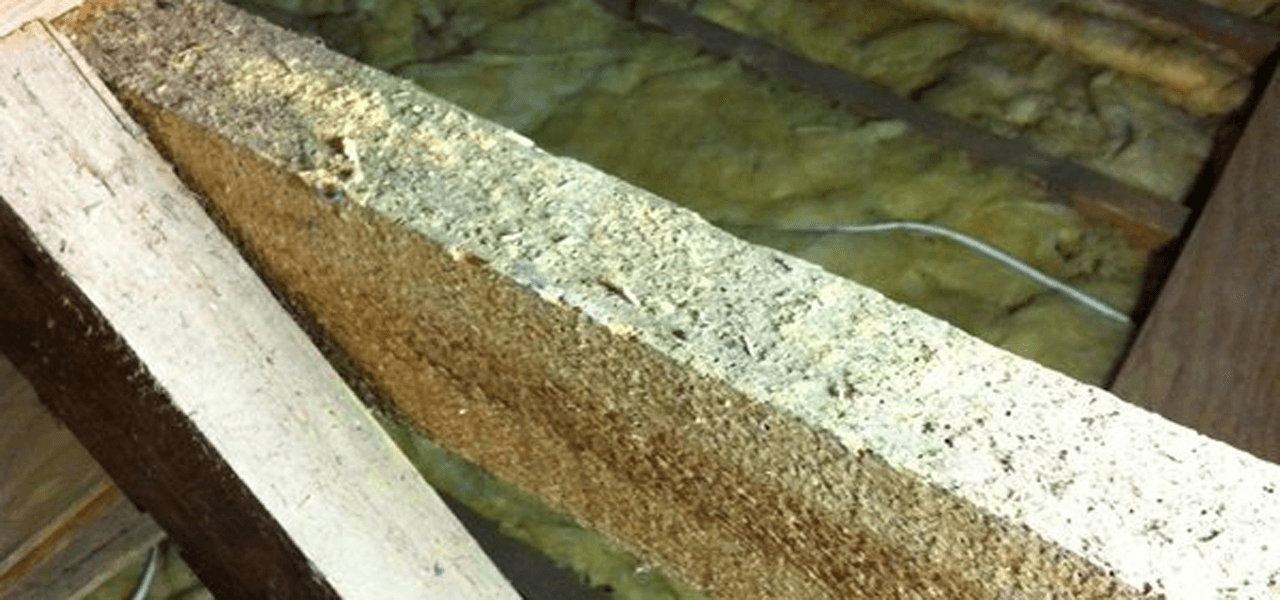How to Spot Early Signs of Dry Rot
How to spot early signs of Dry Rot to prevent long term pain...

The above image is from a dry rot cedar preservation attended, as you can see the impact can be devastating.
Expert diagnosis is vital as this fungus can destroy a property's structural strength. This fungus has the ability to grow through plaster, concrete and brickwork in the search for further wood!
So how do you know you have dry rot? What are the signs and symptoms to look for?
- fine and fluffy white mycelium that you see spreading
- grey-whitish ‘skin’ tinged with patches of yellow or lilac in some cases
- fruiting body – soft, fleshy, mushroom appearing, often orange in colour, rust coloured in the centre, with wide pores
- red dust from spreading spores, often found around fruiting bodies
In flooring it can be harder to identify as it occurs under the floorboards. You may find that the floor feels bouncy, drops away from the skirting boards or floorboards may start to creak more.
Dry Rot in Wood can have signs of Dry Rot in Wood splitting and cracking of timber into small cubes or shrinking of the timber. It can also appear dry, brittle, crumbly timber.
Does it smell?
Yes, it can do, it can have an Earthy odour, Mushroom-like smell or a musty and damp smell
Cedar Preservation conduct a full survey to identify the source of dry rot or wet rot and treat it safely, quickly and efficiently removing the source of the dampness and all defective timbers to eliminate the rot.
Dry rot treatments include rectifying the damp ingress, removal of plasterwork/masonry, removal of decayed timbers and sterilisation of the infected areas.
Wet rot treatments include rectifying the source of dampness, replacement of degenerated timbers and irrigation with a fungicidal solution.
We have worked for many years across Dorset & Somerset supporting customers with Dry Rot. If you suspect you have this, or its been identified in a survey of your property, do get in touch for a Free Survey Inspection.








